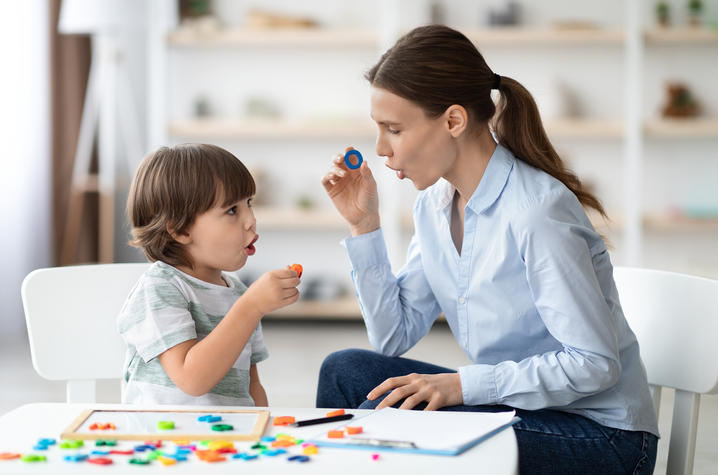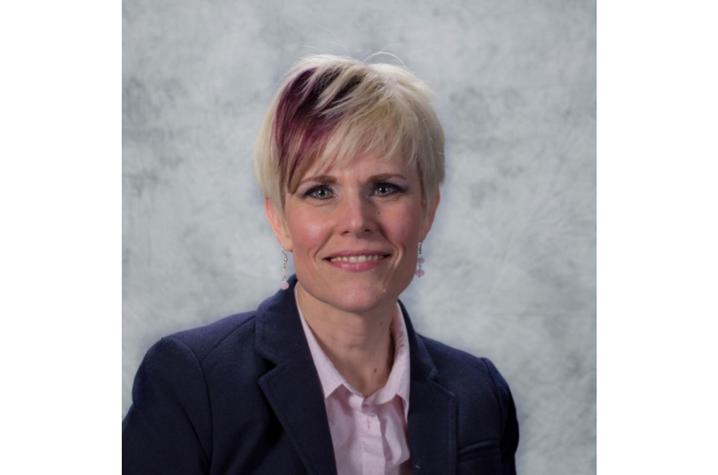Tips to improve your child’s speech development, when to seek help
The University of Kentucky Public Relations and Strategic Communications Office provides a weekly health column available for use and reprint by news media. This week’s column is by Joneen Lowman, Ph.D., professor in the College of Health Sciences, Department of Communication Sciences and Disorders.
LEXINGTON, Ky. (May 19, 2025) – Communication begins at birth when you make eye contact and talk to your baby during care routines like feeding and dressing. Your baby’s smiles and coos spur you to keep this primitive conversation going.
As babies begin to gesture, crawl and sit up, they initiate conversations. During this stage, expect your child to pair gestures with babbling or “pretend talk.” Around 12 months, children typically begin to say their first words, imitate adult speech and answer simple questions nonverbally.
By 24 months, children should have about 50 words in their vocabulary, including their favorite word “mine,” and be speaking in two-word phrases.
A child’s speech and language will explode over the next three years as they use their growing vocabulary to tell stories, answer and ask questions, speak in complete sentences and engage with the world around them.
Strong speech and language skills lay the foundation for reading, writing and furthering academic success. The tips below can help you ensure your child’s communication skills thrive.
Talk to your child frequently
Engage in regular conversations with your child about their day and feelings. Ask open-ended questions to keep the conversation going.
Narrate your daily activities and routines, describing what you are doing and why. Labeling objects and actions exposes your child to new vocabulary and sentence structures in a natural context. Explaining the why for your actions develops critical thinking skills and helps them make inferences.
Listen and respond
Acknowledge your child’s attempts to communicate. Be patient, maintain eye contact, nod and use encouraging words to demonstrate that you’re listening and valuing their turn. Control the urge to finish their sentences for them. Acknowledging their efforts builds confidence and signals to them the importance of communication.
Expand on what your child says by adding more information or rephrasing their words in a more complex manner. This helps them learn new ways to express themselves and enhances their understanding of language.
Read together daily
Demonstrate the importance of reading to life participation. Incorporating book-reading into your daily routine signals to your child that reading can be a fun hobby. Reading environmental materials like recipes, signs and food labels shows them the utility of reading for completing tasks and interacting with their community.
Choose books with interactive elements such as flaps, textures or sounds and repetitive phrases. Encourage your child to participate by asking them to touch or guess what comes next. Books with repetitive phrases allow your child to complete the sentences while reading. These immersive exchanges keep them engaged and practicing language.
Encourage play
Start by imitating daily routines like preparing dinner or caring for a baby. Using familiar routines provides structure and natural roles to play. As your child’s imagination and experiences grow, create new scenarios in which you and your child pretend to have different roles, like being a chef, a zookeeper or a bus driver.
Help your child move from using toys that resemble the real object to substituting unrelated to objects like a block for a comb. These object substitutions promote abstract thinking, which helps to develop inferencing and learning abstract concepts later in school.
Work on building blocks, LEGO sets or model kits together. Discuss the steps and ask questions about what your child is doing. This interaction promotes descriptive language, sequential thinking and problem solving.
Know when to seek help
Not all children meet speech and language milestones. The CDC reports that nearly 8% of children aged 3-17 experienced a communication disorder last year. These disorders are more common in children aged 3-6, boys, and non-Hispanic Black children. Early detection and intervention are effective. Recognizing signs early is crucial for getting professional help from a speech-language pathologist.
Signs to look for
- Limited vocabulary: If your child’s vocabulary is noticeably smaller than same-age peers, especially by age two or three, this could indicate a need for assessment.
- Difficulty pronouncing words: Problems with articulation, such as frequent mispronunciations or difficulty producing certain sounds, can signal a need for assistance. A child’s speech should be intelligible to others by age three.
- Struggles with sentence structure: Children who have trouble constructing sentences, using proper grammar, or who speak in disjointed phrases may benefit from speech-language therapy. By age 4, children should be able to form sentences with appropriate syntax and structure.
- Challenges with social interaction: Issues in social communication, such as difficulty participating in conversations, understanding social cues, or expressing a range of thoughts and emotions clearly, are important signs. If your child struggles to engage with others or is frequently excluded from peer activities, seeking help is advisable.
While each child develops at their own pace, recognizing these signs and seeking professional guidance can support a child’s communication development and overall well-being. Early intervention by a speech-language pathologist can make a significant difference in helping your child overcome speech and language challenges.
As the state’s flagship, land-grant institution, the University of Kentucky exists to advance the Commonwealth. We do that by preparing the next generation of leaders — placing students at the heart of everything we do — and transforming the lives of Kentuckians through education, research and creative work, service and health care. We pride ourselves on being a catalyst for breakthroughs and a force for healing, a place where ingenuity unfolds. It's all made possible by our people — visionaries, disruptors and pioneers — who make up 200 academic programs, a $476.5 million research and development enterprise and a world-class medical center, all on one campus.






